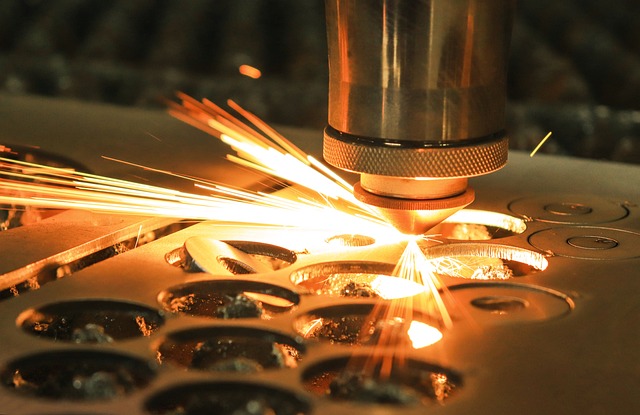In manufacturing and metalwork, precision and efficiency are key to delivering high-quality results. To achieve the highest level of precision, traditional and laser cutting are often used for shaping and altering metals. Both techniques have their own advantages, but the choice depends on specific project requirements, such as material type, design complexity, and speed.
If you're exploring options for custom metal laser cutting and are confused about the difference between laser and custom cutting, keep reading this article.
Laser Cutting:
Laser cutting is a non-contact method that uses a concentrated beam of light to cut, melt, or vaporize materials. This technology has become popular in various industries because it can achieve intricate and complex cuts with high precision.
The process starts with focusing a high-powered laser onto a specific point on the material. As the laser moves, it generates enough heat to cut through metals like stainless steel, aluminum, and other alloys.
The precision of laser cutting makes it ideal for projects that require detailed designs. The laser beam is extremely narrow, allowing tight tolerances that ensure accurate shapes and edges. This results in clean cuts with minimal post-processing work. Moreover, the non-contact nature of laser cutting reduces the risk of material deformation, making it suitable for thin and delicate metals.
Traditional Cutting Methods:
Traditional cutting encompasses a range of mechanical methods, such as shearing, sawing, and drilling, which have been used for decades in metal fabrication. Unlike laser cutting, traditional methods rely on physical force or friction to separate materials.
Traditional cutting tools are known for their durability and the ability to handle thick and heavy materials. They are often preferred for projects where simplicity is more critical than precision. For example, sawing can be effective when straight cuts are needed, and drilling can create holes with consistent diameters across large surfaces.
Key Factors in Selecting a Cutting Method
Choosing between laser cutting and traditional cutting depends on several factors, including material thickness, design requirements, and project scale. Laser cutting shines in applications where high precision and intricate details are necessary. This makes it particularly well-suited for custom metal laser cutting, where unique shapes and designs are needed for specialized components.
Traditional cutting methods, on the other hand, are beneficial for projects involving thicker materials or simpler designs. The use of manual or mechanical force makes it easier to manage materials that are challenging for a laser to cut through efficiently. Additionally, traditional methods can be more accessible in terms of initial investment, as they often require less advanced machinery.
Safety and Maintenance Considerations
Safety is an important aspect to consider when comparing laser cutting and traditional cutting. Laser cutting systems are enclosed, which helps to minimize exposure to harmful laser beams and airborne particles generated during the process. Here, operators can maintain a safer working environment by adhering to safety guidelines and using protective equipment.
In contrast, traditional cutting methods can produce dust, sparks, and noise, which may require additional safety measures, such as ventilation systems and personal protective equipment. Regular maintenance of cutting tools is also essential to prevent wear and tear and ensure consistent results over time.
Cost Implications and Long-term Benefits
While laser-cutting technology tends to have higher upfront costs due to the need for advanced machinery, the long-term benefits often outweigh these initial expenses. Laser systems require minimal manual intervention, reducing labor costs and increasing productivity. This can be a significant advantage for businesses that need to produce large volumes of parts without compromising on quality.
Traditional cutting methods may appear more cost-effective initially, especially for smaller-scale projects, as the equipment and setup costs are generally lower. However, the labor-intensive nature of these methods can result in higher operational costs over time. Thus, businesses need to assess their production needs and long-term goals when deciding between these two methods.
Environmental Impact of Cutting Techniques
The environmental footprint of a cutting method is another consideration for many businesses today. Laser cutting is known for minimizing material waste and energy consumption. Focusing only on energy where needed reduces overall power usage, making it a more sustainable choice for custom metal laser cutting projects.
Traditional cutting methods can generate more waste due to the physical removal of material, often resulting in scrap pieces that need to be disposed of. Additionally, mechanical cutting processes may consume more energy due to the continuous operation of saws, drills, and other tools.
Conclusion
When choosing between laser cutting and traditional cutting methods, it’s essential to align the choice with your project’s specific needs. Laser cutting offers unmatched precision, speed, and versatility, making it ideal for intricate designs and custom metal cutting requirements. On the other hand, traditional cutting methods remain valuable for their simplicity, robustness, and ability to handle larger, heavier materials. By understanding the strengths of each method, businesses can make informed decisions that optimize their production processes and deliver superior results.





Comments